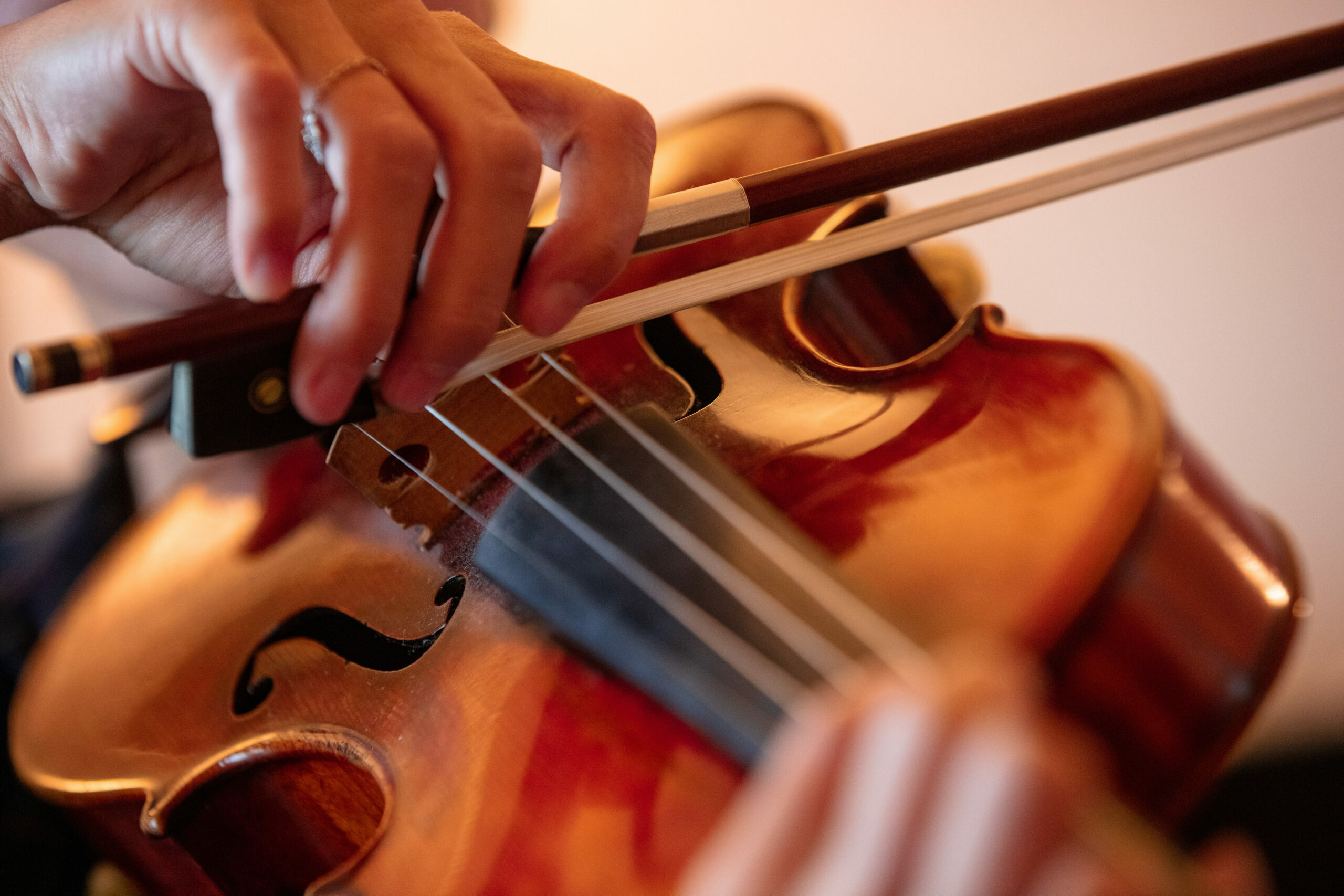3. 分弓:Detaché寬大但獨立的筆觸,介於連音和頓音之間。 "霍爾-湯普金斯說:"比挑弓更平易近人,一個漂亮的分弓可以給獨奏作品帶來輕快和精神,給管弦樂小提琴部分的段落帶來清晰的感覺。 "為了達到這個目的,像往常一樣,要確保上弓與下弓相匹配,筆觸一般在中間點或彈跳點以上。"
4.斷音。 Staccato上弓使用大量的手腕和手指動作來實現快速、短促的爆發。下弓採用比正常手腕更平的動作。霍爾-湯普金斯說:"與分弓相似,我認為這個弓法是一個較短的版本,不一定要用全弓,它對於較快的節奏和段落來說應該是更容易的。同樣,一個強有力的弓法是一個重要的基礎,所以一定要把它作為你練習的一部分。"
5. 拋弓Spiccato: 匈牙利小提琴教育家卡爾-弗萊什指出,在斯皮卡託中,"演奏者是主動的,弓是被動的"。霍爾-湯普金斯說:"這是讓我們飛翔的第一種筆觸,在這一點上Collé對於實現騰飛是絕對重要的。首先,在四分之一音符等於50或60的情況下,開始練習紮實的套弓基礎。在產生了穩定的聲音後,逐漸發展到八分音符、三分音符、十六分音符、五分音符、六分音符和三十二分音符,在每一個音符上都要平等地離弦,並在更快的音符值中包括前臂。"
6.連弓Legato: 一個長而流暢的運弓,使用更多的弓長來產生流暢的效果。霍爾-托普金斯說:"與表面現象相反,這種運弓方式並不簡單地局限於一種上下的機械性,"。霍爾-湯普金斯說:"應該有一個聽起來比各部分之和更大的連接組織,使旋律具有超越小節線的歌唱能力。有很多優美的演奏仍然錯過了這種難以捉摸的能力。為了練習它,要確保靠在弓子的變化上,沒有任何明顯的突起,但也沒有衰減–持續,持續!
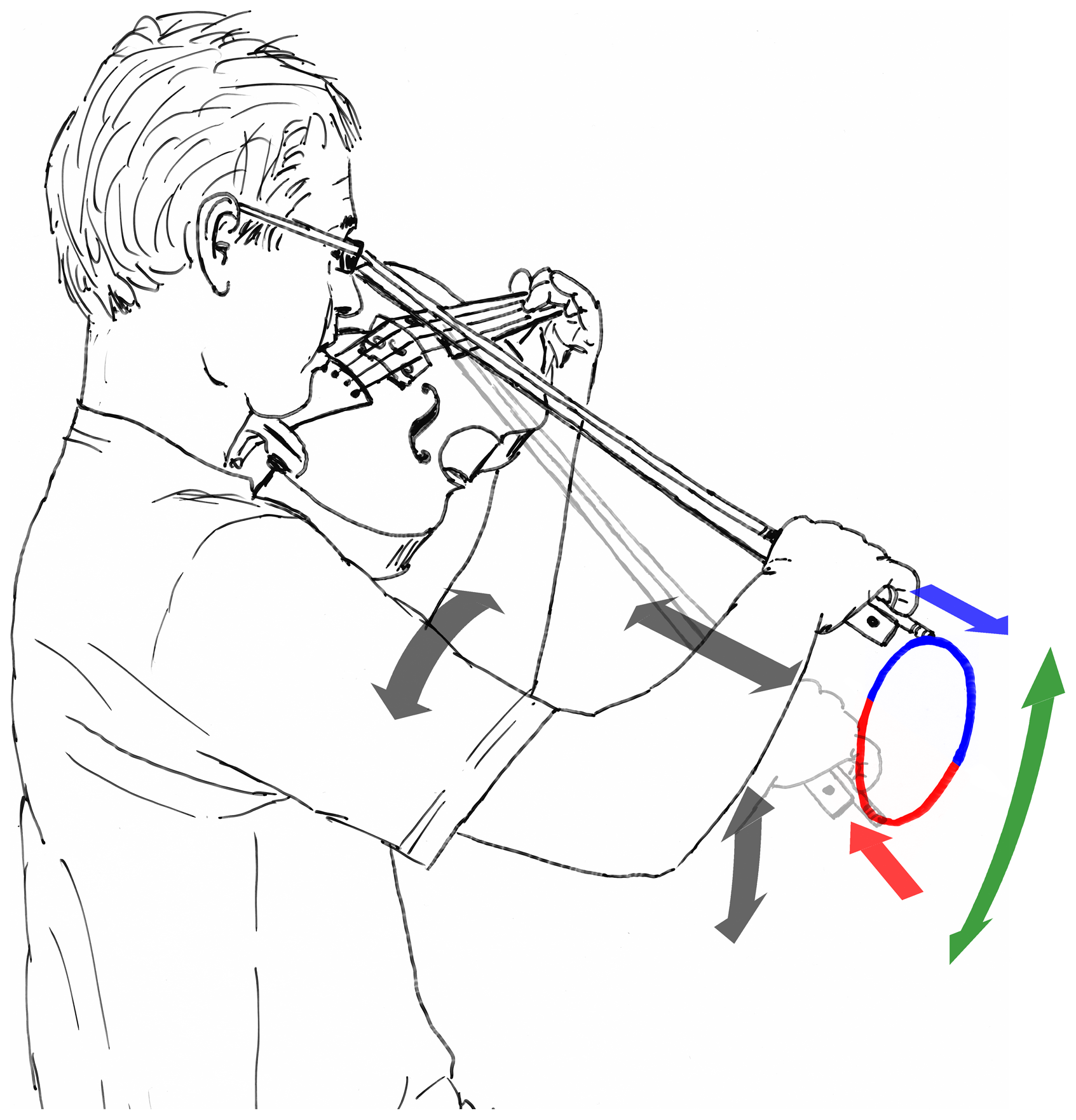
音樂就是思想著的聲音。
Music is the sound of thinking.
______________________________________________________________________________________________________________________________________________
String players have a bevy of tips and tricks up their sleeve when it comes to adding nuance to their sound, and many of those go-to tricks are all in the bow stroke. From pizzicato to martelé and all the bow strokes in between, here are a few tips to improve your right-hand repertoire. “When you play a violin piece,” violinist Joshua Bell once said, “you are a story teller and you are telling a story.” To tell a good story, articulately, you need the right vocabulary and nuanced expression.
For string players, that means gaining a command of basic bow strokes. Your teacher will help you to learn these fundamental bow strokes, but to help you master these motions, Strings asked Kelly Hall-Tompkins—a popular concert violinist who played the title role of the fiddler on the recent Broadway revival of Fiddler on the Roof—for tips on perfecting ten popular bow strokes.
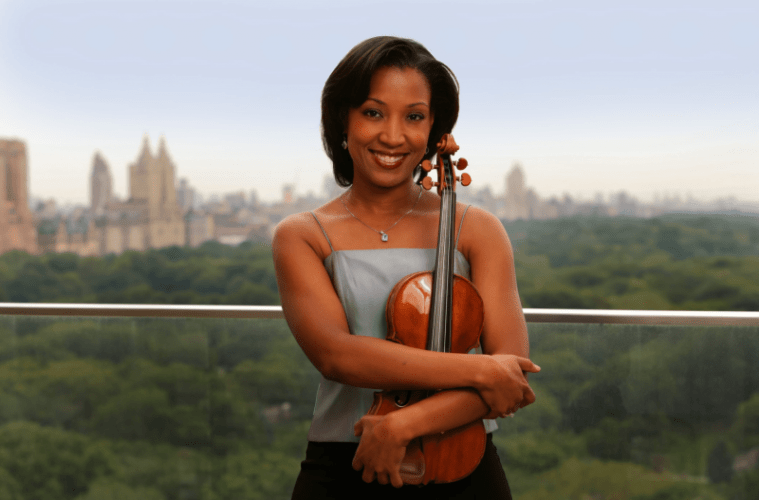
1. Collé: Press the bow four inches from the frog into the string, with the fingers curved, and pluck—remember that collé is the French term for “glue.” Says Hall-Tompkins: “This is a stroke for the advanced student, only after a solid bow grip and sound production are really mastered. It centers on strength and agility of the fingers, isolated from the mechanics of the complete bow arm, and is the foundation of so many other strokes. Practice collé as a fingers-only, slow-motion springing action at the frog, both down and up, achieving a super-articulate and weighty ‘K’ effect. Practice making the fingers strong enough to coil and release without coming off of the bow, without using any arm motion, and equal down and up.”
2. Martelé: This strongly hammered motion requires each successive note to be isolated with the bow stroke. “Among the many strokes that can be mastered only after mastering a strong foundation of collé, this is one,” Hall-Tompkins says. “Each stroke should have a clear, articulate start and also a weighted, fast arm drawn. For maximum clarity, it’s important that the sounding point be matched to the speed of the bow, closer to the bridge, and that the bow remains straight from frog to tip.”

3. Detaché: Broad, but separate, strokes that fall midway between legato and staccato. “More easy-going than a martelé, a nice detaché can bring lightness and spirit to solo character pieces and clarity to orchestral violin section passages,” Hall-Tompkins says. “To achieve this, as always, make sure that the up-bows match the down-bows and that the stroke is generally above the middle or bounce point.”
4. Staccato: Up-bow staccato uses lots of wrist and finger action to achieve quick, short bursts. Down-bow staccato employs a flatter than normal wrist. Says Hall-Tompkins: “Similar to a martelé, I think of this stroke as a shorter version in which the full bow is not necessarily used, and it should be more facile for faster tempi and passagework. Again, a strong collé is an important foundation, so always make that part of your practice routine.”
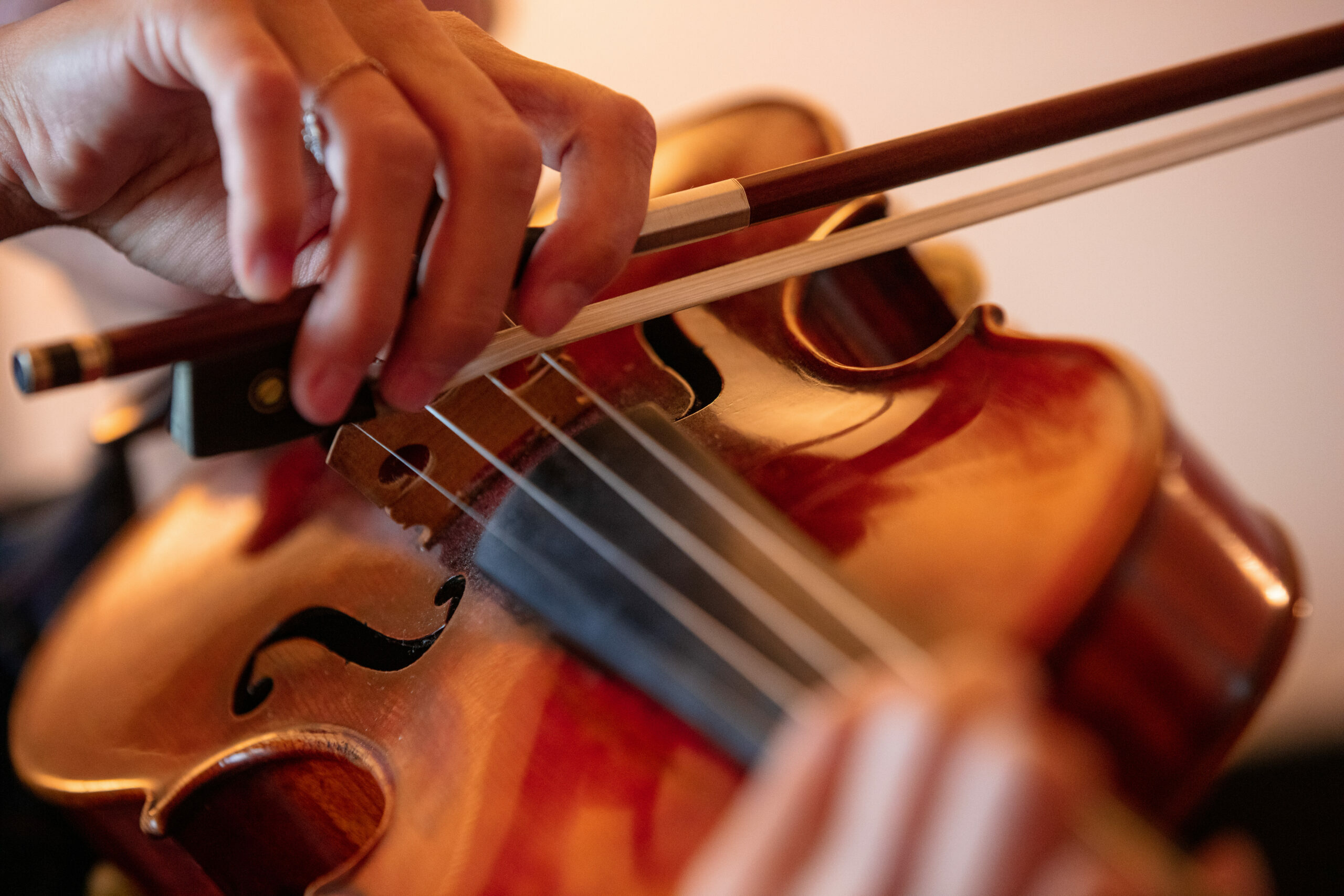
5. Spiccato: The Hungarian violin pedagogue Carl Flesch noted that in spiccato, “the player is active, the bow is passive.” Says Hall-Tompkins: “This first of the strokes that allow us to fly is where collé is absolutely paramount to ever achieving liftoff. Begin by practicing a solid foundation of collé at quarter note equals 50 or 60. After producing consistent-sounding strokes, gradually progress to eighths, triplets, 16ths, quintuplets, sextuplets, and 32nds, coming off the string equally on each and including the forearm in the faster note values.”
6. Legato: A long, fluid stroke that uses more of the bow length to produce a smooth effect. “This is a stroke which, contrary to appearances, is not simply limited to an up and down mechanic,” Hall-Tompkins says. “There should be connective tissue that sounds greater than the sum of the parts, giving melodies the ability to sing beyond the bar line. There is a lot of beautiful playing that still misses this elusive ability. To practice it, make sure to lean into bow changes, without any overt surges, but without decaying either—sustain, sustain!”
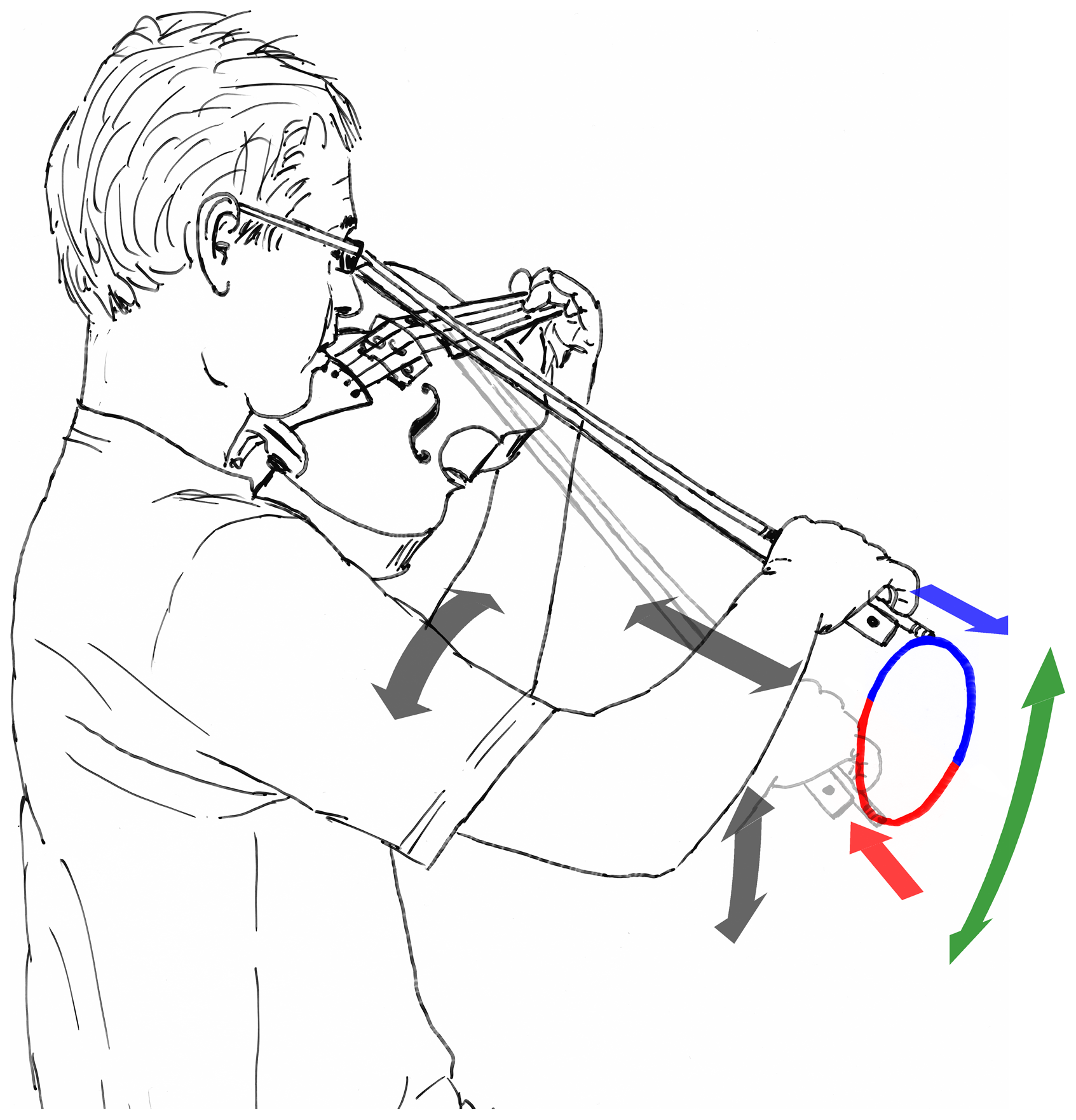
音樂就是思想著的聲音。
Music is the sound of thinking.


